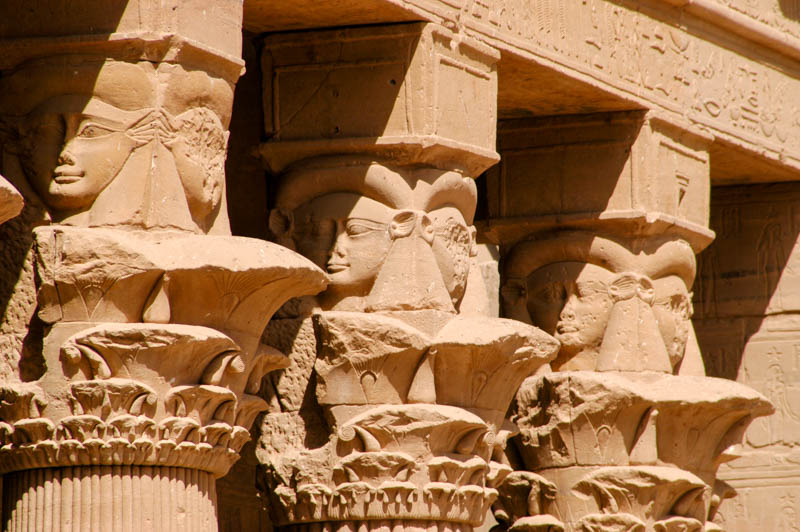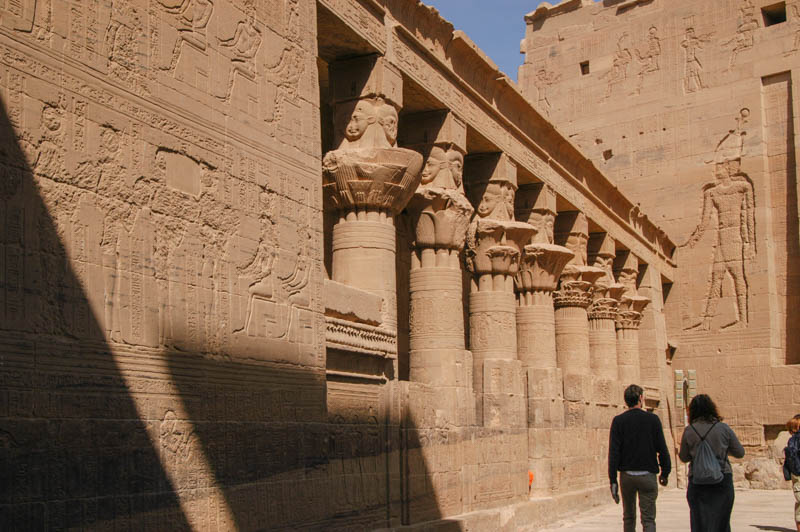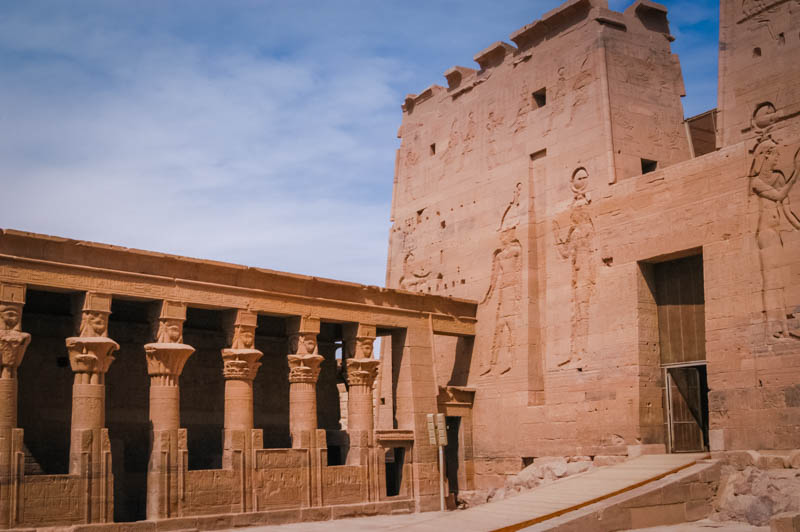
This structure on the west side of the courtyard is a Birth House built by Ptolemy IV to link him to his “royal ancestry” of Horus and Osiri

The exterior was decorated by the Romans, with images of the Emperor Augustus and the gods. THe colonnade is hathor-headed, as are many of the mammisi in the temples we saw — Hathor was also the goddess of fertility. MIssing here, though was the images of the leering dwarf-god, Bes, god of childbirth. The roman inscriptions are done over the top of hieroglyphs and demotic text that mimic that on the Rosetta stone.

Inside, the carvings are defaced, but you can see the goddess Isis suckling HOrus in a pose that will be very familiar to Christian art — the “madonna and child” image originated with Isis and Horus